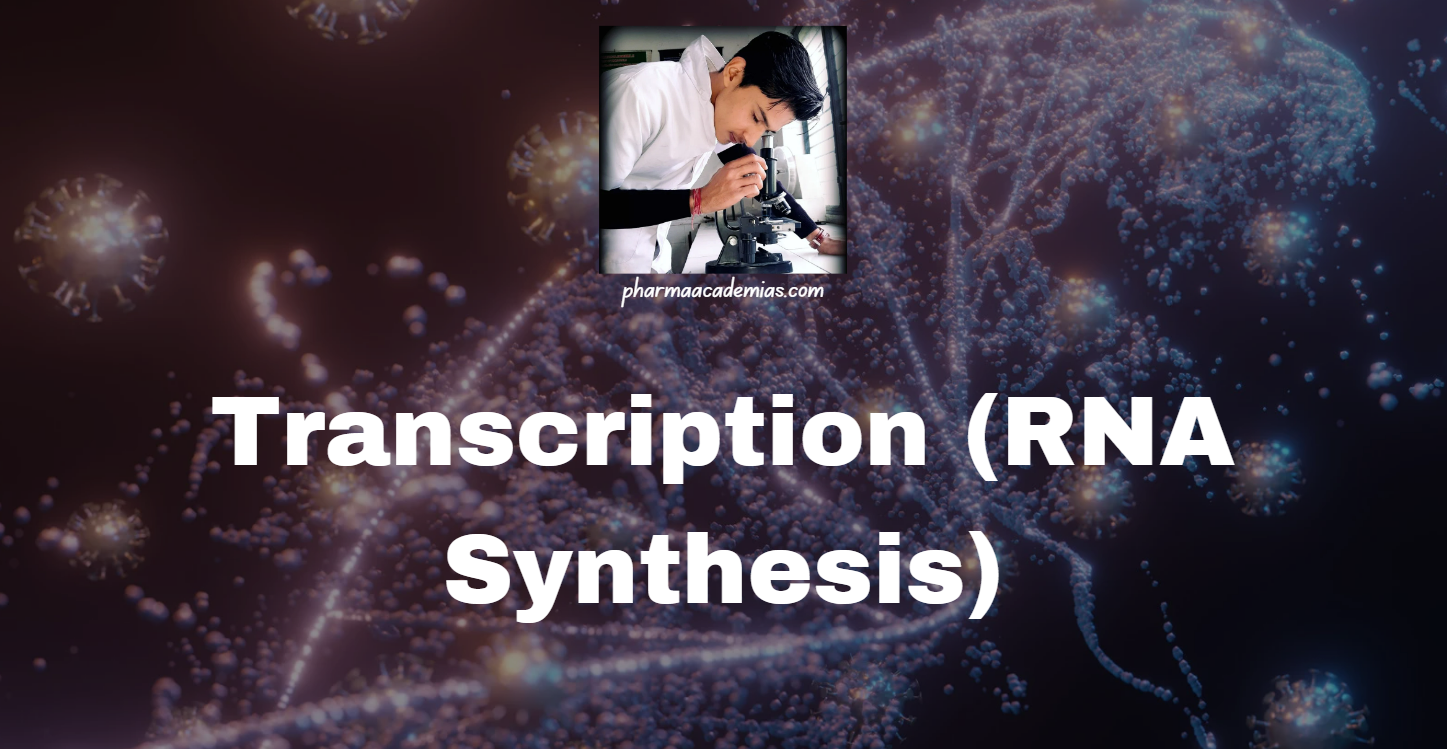Transcription is the process by which genetic information encoded in DNA is copied into messenger RNA (mRNA). This is the first step in gene expression, leading to the synthesis of proteins. Transcription occurs in the nucleus of eukaryotic cells and in the cytoplasm of prokaryotic cells. Here is a detailed note on transcription.

Key Steps in Transcription
1. Initiation
Promoter Recognition: Transcription begins when RNA polymerase binds to a specific region of DNA called the promoter. The promoter is located upstream of the gene and contains specific sequences that are recognized by transcription factors and RNA polymerase.
Transcription Factors: These proteins help RNA polymerase locate the promoter and initiate transcription. In eukaryotes, the assembly of a complex of transcription factors is often required before RNA polymerase can bind.
RNA Polymerase Binding: Once the transcription factors have bound to the promoter, RNA polymerase binds to the DNA and unwinds a small portion of the double helix to expose the template strand.
2. Elongation
a) RNA Synthesis: RNA polymerase synthesizes the RNA strand by adding ribonucleotides complementary to the DNA template strand. RNA synthesis occurs in the 5′ to 3′ direction.
b) RNA Polymerase Movement: As RNA polymerase moves along the DNA, it continues to unwind the double helix and synthesize the RNA strand. The DNA behind the polymerase re-anneals into a double helix.

3. Termination
Termination Signal: Transcription continues until RNA polymerase encounters a termination signal in the DNA. In prokaryotes, termination signals can be intrinsic (forming a hairpin loop in the RNA) or involve a protein factor called Rho. In eukaryotes, termination involves specific sequences and processing signals.
Release of RNA Transcript: Upon reaching the termination signal, RNA polymerase releases the newly synthesized RNA strand, and the DNA helix reforms completely.
Post-Transcriptional Modifications (Eukaryotes):
5′ Capping: Shortly after initiation, a modified guanine nucleotide (7-methylguanosine) is added to the 5′ end of the pre-mRNA. This cap protects the RNA from degradation and helps in ribosome binding during translation.
3′ Polyadenylation: At the end of transcription, a sequence of adenine nucleotides (poly-A tail) is added to the 3′ end of the pre-mRNA. This tail also protects the RNA from degradation and aids in the export of the mRNA from the nucleus.
Splicing: In eukaryotes, the pre-mRNA contains introns (non-coding regions) and exons (coding regions). Splicing removes the introns and joins the exons together to form a continuous coding sequence. This process is carried out by a complex called the spliceosome.
Key Components Involved in Transcription:
RNA Polymerase: The enzyme that synthesizes RNA. In prokaryotes, a single RNA polymerase performs this function. In eukaryotes, there are three types (RNA polymerase I, II, and III), each responsible for transcribing different types of RNA.
Promoters: DNA sequences that define where transcription of a gene by RNA polymerase begins. Eukaryotic promoters often contain a TATA box, a consensus sequence that helps position the RNA polymerase.
Transcription Factors: Proteins that bind to specific DNA sequences and regulate the transcription of genes. They can either activate or repress transcription.
Enhancers and Silencers: Regulatory DNA sequences that can increase (enhancers) or decrease (silencers) the rate of transcription. They can be located far from the gene they regulate.
Differences Between Prokaryotic and Eukaryotic Transcription
Location: In prokaryotes, transcription occurs in the cytoplasm, whereas in eukaryotes, it occurs in the nucleus.
RNA Polymerase: Prokaryotes have a single RNA polymerase, while eukaryotes have three different RNA polymerases (I, II, and III) with specialized functions.
Post-Transcriptional Modifications: Eukaryotic mRNA undergoes extensive processing (capping, polyadenylation, and splicing) before it is translated, whereas prokaryotic mRNA does not undergo such modifications.
Regulation: Eukaryotic transcription is highly regulated with numerous transcription factors, enhancers, and silencers, while prokaryotic transcription regulation is simpler.
Significance of Transcription:
Gene Expression: Transcription is the first step in gene expression, determining which genes are expressed and to what extent.
Protein Synthesis: The mRNA produced during transcription serves as the template for protein synthesis during translation.
Regulation: Transcriptional regulation allows cells to respond to environmental changes and maintain homeostasis by adjusting gene expression levels.
Genetic Disorders: Mutations affecting transcription can lead to genetic disorders and diseases, highlighting the importance of accurate transcriptional control.
Transcription is a complex and highly regulated process essential for the proper expression of genes and the functioning of cells. Understanding the mechanisms and regulation of transcription provides insights into cellular processes, development, and disease.
Visit to: Pharmacareerinsider.com

